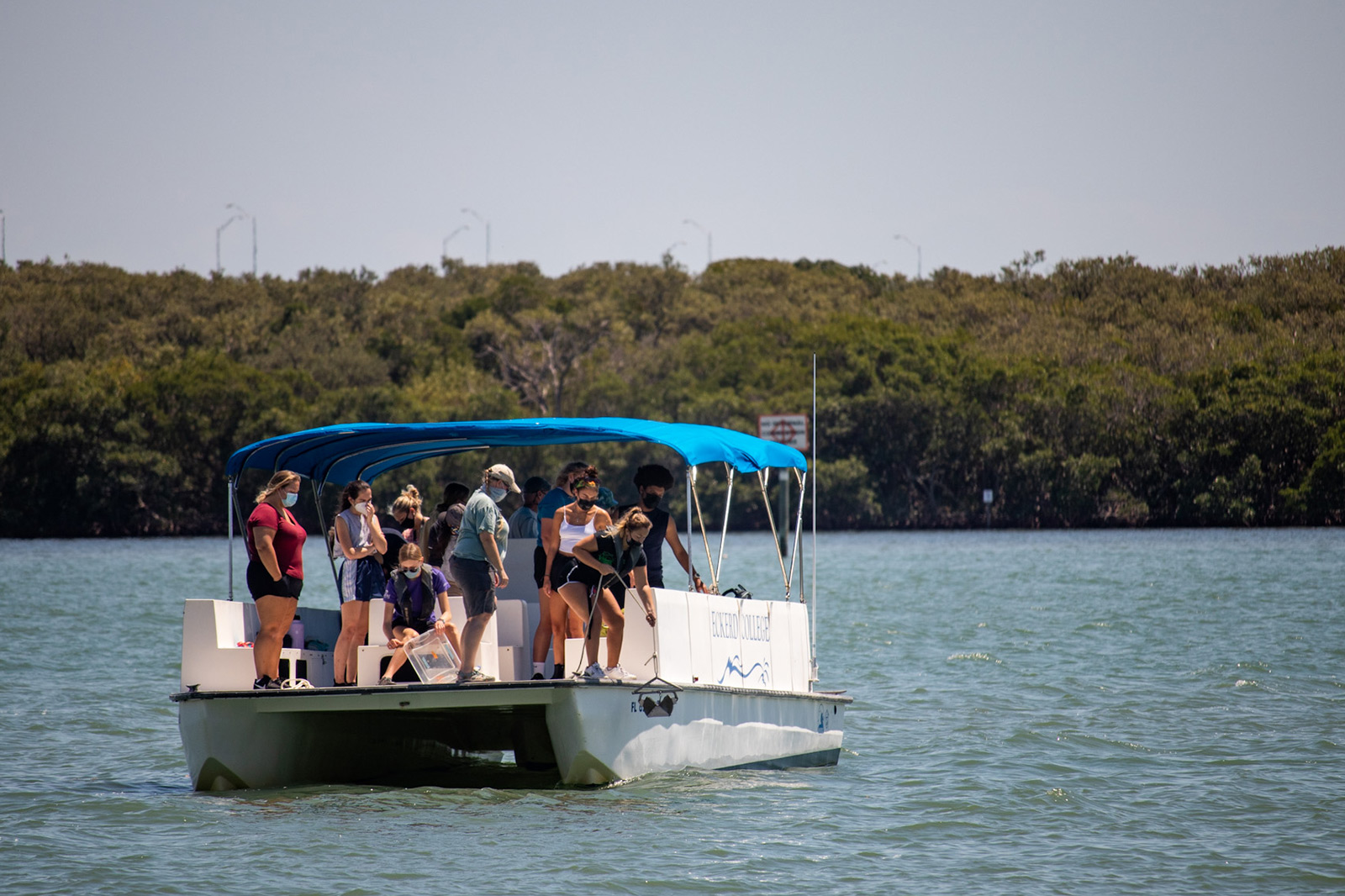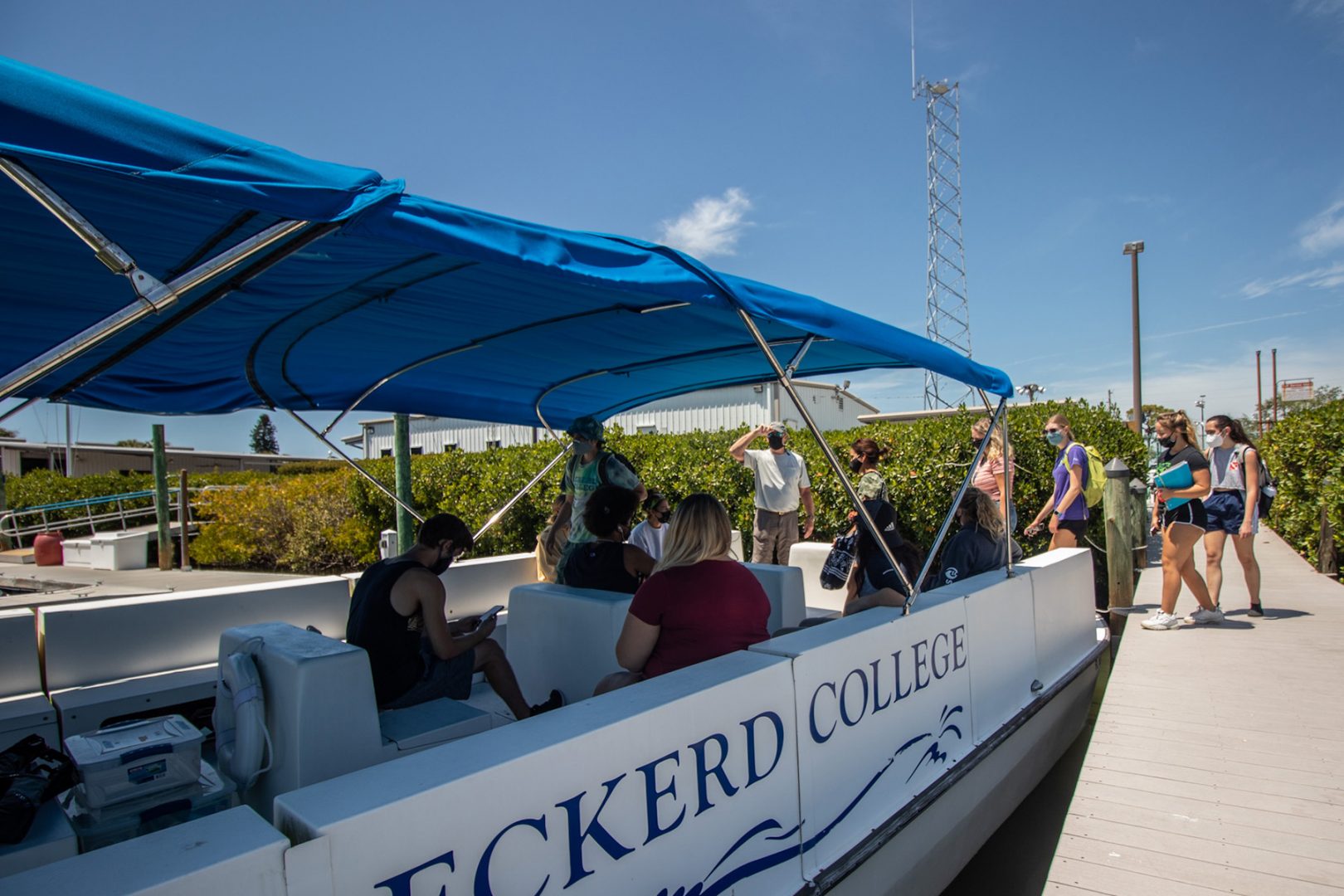In late March, Florida Department of Environmental Protection officials authorized the dumping of 215 million gallons of nitrogen-rich wastewater from a collapsing retention pond at Palmetto, Florida’s Piney Point phosphate plant into Tampa Bay. Averting one disaster awakened the marine science community to another potential setback for the recently recovered estuary.
In collaboration with the University of South Florida (USF) and the Florida Institute of Oceanography (FIO), Eckerd College professors took to the water in early April to begin extensive sampling and monitoring of the distribution of the wastewater and its potential impacts on the ecosystem.
Professor of Marine Science and Geosciences Gregg Brooks, Visiting Assistant Professor of Marine Science Patrick Schwing ’06 and Research Scientist Rebekka Larson ’01 used Eckerd’s 24-foot Capehorn research vessel to collect samples of surface sediments, representative fish and large volumes of water from two transects from the shoreline into Tampa Bay from Port Manatee and from Bishop Harbor. The faculty crew also measured water salinity, temperature, pH and dissolved oxygen at different water depths. Fish samples were provided to USF fisheries biologist Steve Murawski for analysis.
“The student research assistants are currently processing water column chemistry data, sediment and water samples for foraminifera (bioindicator of impact/response), radioisotopes and sedimentology,” explained Schwing. “These analyses will continue throughout the summer. We are also working with our colleagues at USF, particularly Steve Murawski, who will provide fish tissue for radioisotope measurements. These radioisotope measurements are being used as tracers of the effluent plume in the water and also tracers of that material into fish tissue and sediments over time.”
Sampling may continue biweekly throughout the study period. Even Eckerd classes are taking an active role in this scientific effort.
“Gregg Brooks’s first-year Geological Oceanography class already collected complementary samples near Eckerd to use as a control site and to establish a baseline for the marine environments around Eckerd,” Larson said. “We also plan on collecting sediment cores for a thorough high-resolution investigation of the sediments accumulating in the area with Brooks’s Stratigraphy and Sedimentation class in the fall of 2021.”
Harmful plastic pollutants also could be a part of the Piney Point impact on Tampa Bay. The Tampa Bay Estuary Program provided Assistant Professor of Marine Science Amy Siuda and Professor of Marine Science and Biology Shannon Gowans with samples from the seagrass beds near Piney Point to investigate if there is an uptick in microplastic pollution in the bay. Students will process the six buckets of samples in this ongoing effort in coordination with the Hillsborough County Environmental Protection Commission. Gowans said by next week the researchers should have early numbers to know if levels of plastic are elevated because the plastic liner of the retention pond had degraded. “If levels are not elevated, then it is likely that no further testing will be conducted,” Gowans said.
The National Oceanic and Atmospheric Administration (NOAA), NOAA Marine Fisheries Service and the Sarasota Dolphin Research Program are working with the Eckerd College Dolphin Project to keep an eye on Tampa Bay’s bottlenose dolphin population. Coordinators Gowans and Visiting Assistant Professor of Environmental Studies Peter Simard expanded the program’s student-led monitoring to include observations about dolphins’ use of the bay and possible changes in body condition in the mammals. “We’re looking for changes in skin conditions or the possible effects of a fish kill leading to changes in distribution or behavior as animals seek out other food sources,” Gowans said. “We will continue these actions over the summer and into the fall as needed.”














